Hyas lyratus Dana, 1851Common name(s): Lyre crab, Pacific lyre crab |
|
| Synonyms: Sayas lyratus | 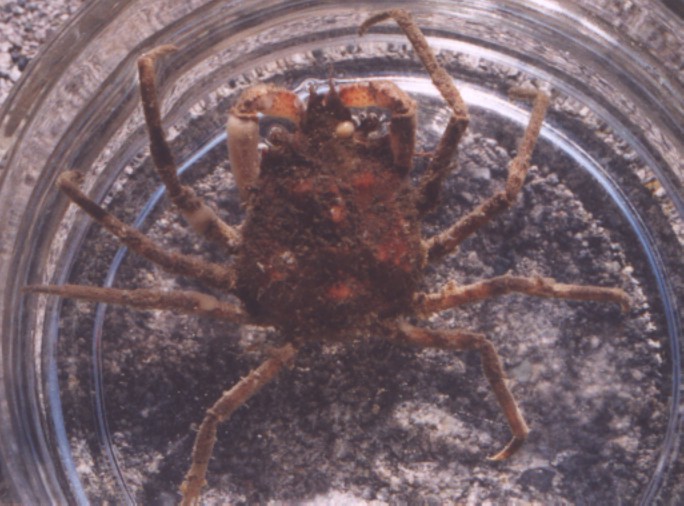 |
| Phylum Arthropoda
Subphylum Crustacea Class Malacostraca Subclass Eumalacostraca Superorder Eucarida Order Decapoda Suborder Pleocyemata Infraorder Brachyura Family Majidae |
|
| Hyas lyratus from 90 m depth, San Juan Channel | |
| (Photo by: Dave Cowles July 1999) | |
How to Distinguish from Similar Species: The only other local majid crab with a lyre-shaped carapace is Oregonia bifurca, which has a longer rostrum and lives belor 500 m depth.
Geographical Range: Chukchi and Bering Seas south to Puget Sound.
Depth Range: 9 to 640 meters
Habitat: Mixed bottom, especially shelly hash
Biology/Natural History: Carapace is often overgrown with barnacles and other attached species, such as the small tunicate on the base of the rostrum of the species above.
While the large majority and abundant species of true (Brachyuran) crabs walk sideways, members of genus Hyas walk forward. In a 2025 preprint, Taniguchi et al. speculate that the sideways walking in so many true crab species is is because walking sideways allows for rapid escape locomotion options in two directions, providing a selective advantage.
| Return to: | |||
| Main Page | Alphabetic Index | Systematic Index | Glossary |
References:
Dichotomous Keys:Coffin, 1952
Flora and Fairbanks, 1966
Hart, 1982
Kozloff 1987, 1996
General References:
Jensen,
1995
Scientific
Articles:
Taniguchi, Cunya, Tsubasa Inoue, Kano Kohara, Jung-Fu Huang, Atsushi
Hirai, Nobuaki Mizumoto, Fumio Takeshita, and Yuuki Kawabata, 2025.
Evolution of Sideways locomotion in crabs (Preprint). doi:
Wicksten, Mary K., 1976. Studies on the hooked setae of Hyas lyratus (Brachyura: Majidae). Syesis 9: pp 367-368
General Notes and Observations: Locations, abundances, unusual behaviors:

A close-up of the rostrum, enlarged from above. A small tunicate is growing on the base.
Photo by Dave Cowles, July 1999
We capture this crab mainly during deep benthic trawls in the San Juan channel

This individual, carapace length 4.8 cm, was captured in the San Juan
Channel July 2005 at 100-150 m depth. Photo by Dave Cowles,
July
2005
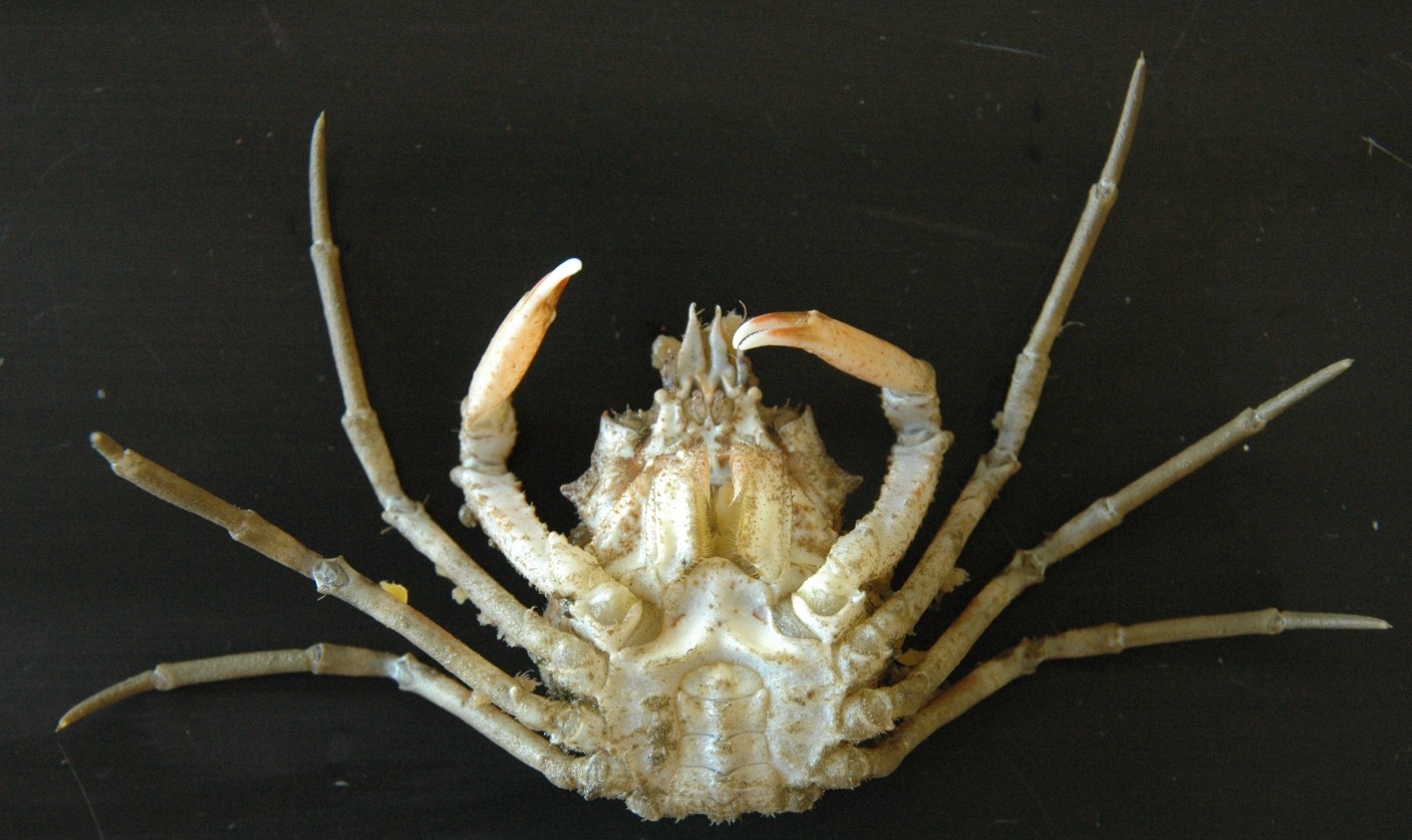
The undersde of a female. Photo by Dave Cowles, July 2008
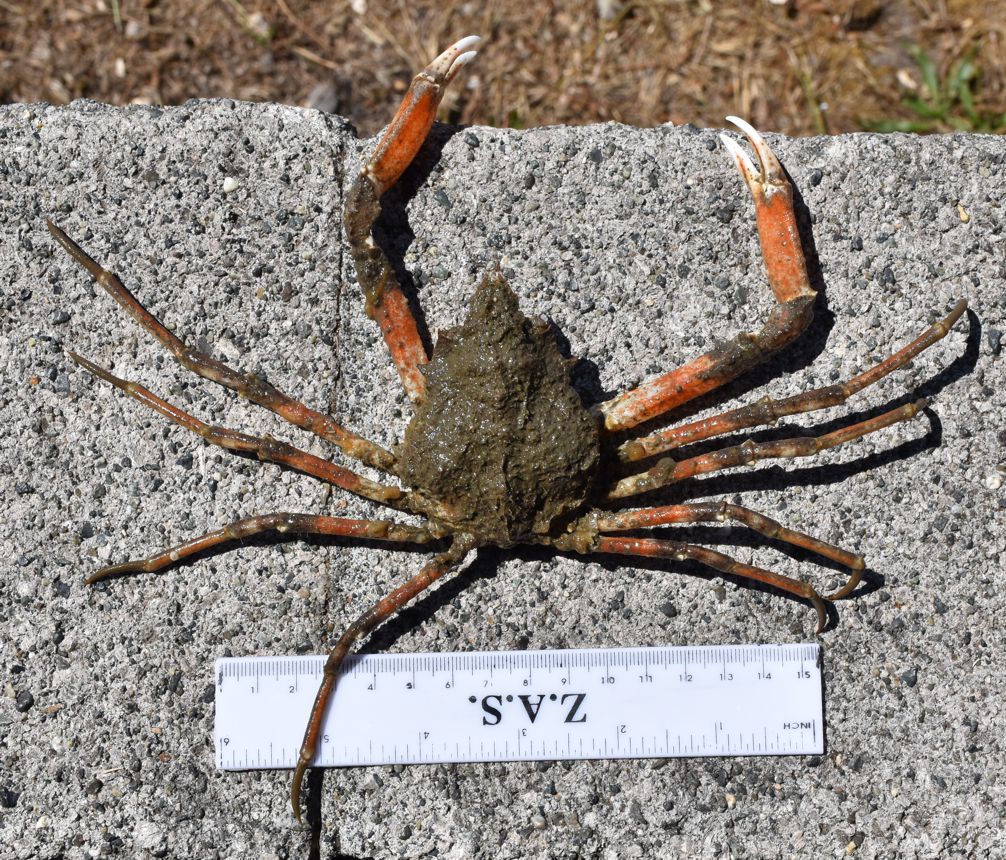
A dorsal view of an individual captured between 100-120 m depth in the
San Juan Channel. Photo by Dave Cowles, August 2015.
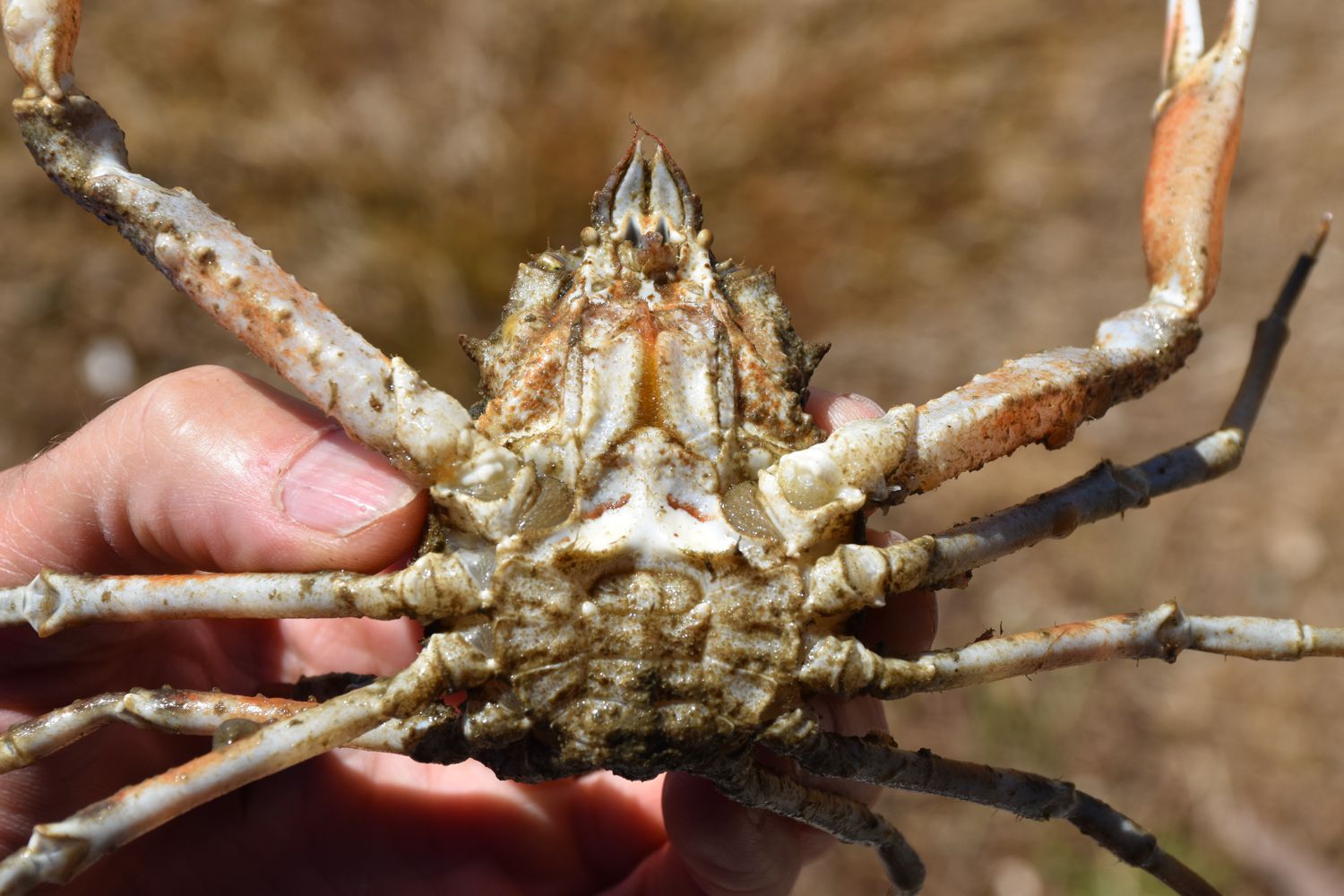
Ventral view of the same individual. Note that the two prongs of the
rostrum are wide in the middle, as in Scyra acutifrons,
but unlike S. acutifrons
they remain wide to the base. Photo by Dave Cowles, August 2015
| More photos of an individual Hyas lyratus female crab which has an attached yellow sponge, by Dave Cowles August 2014 |
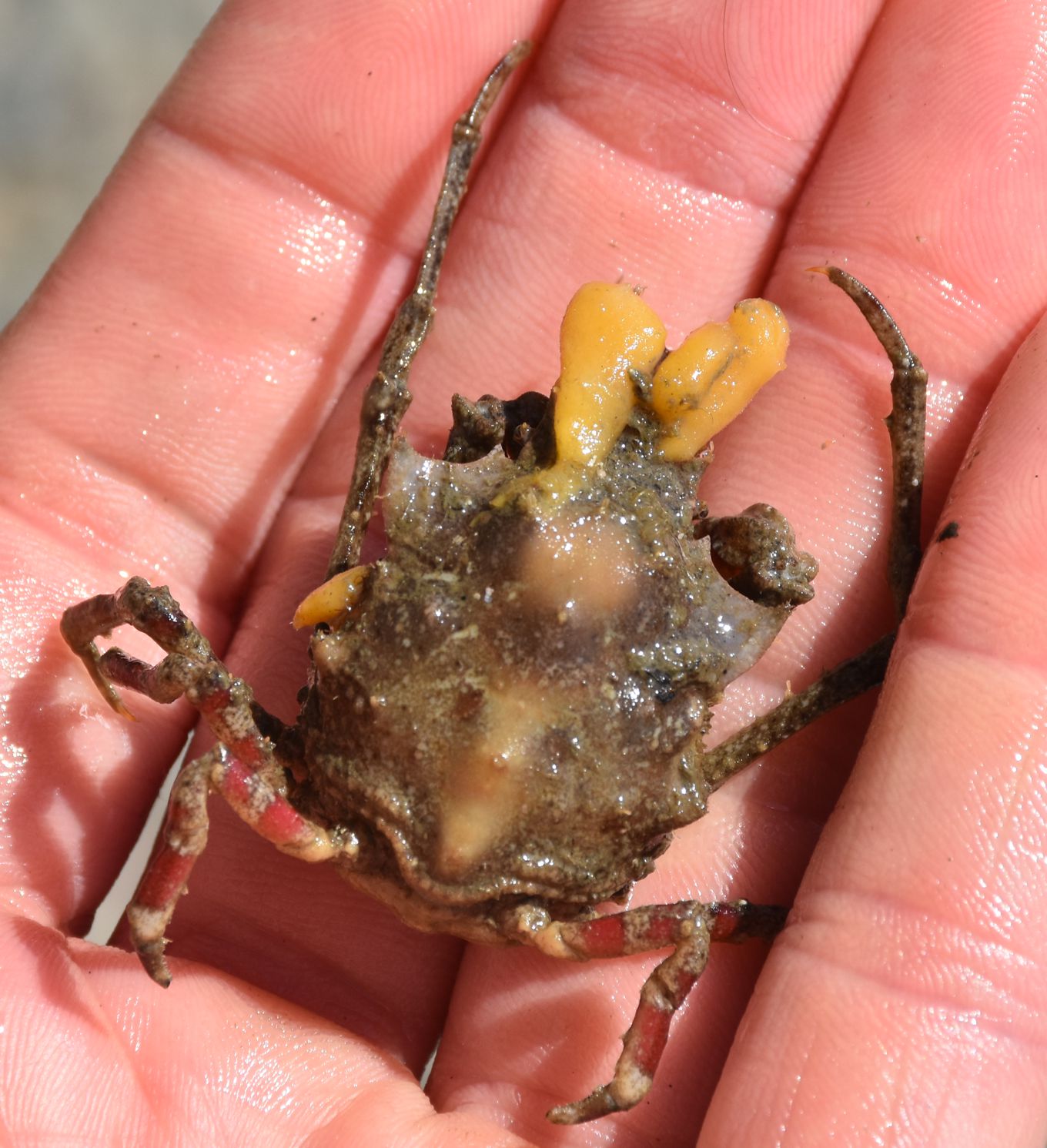 |
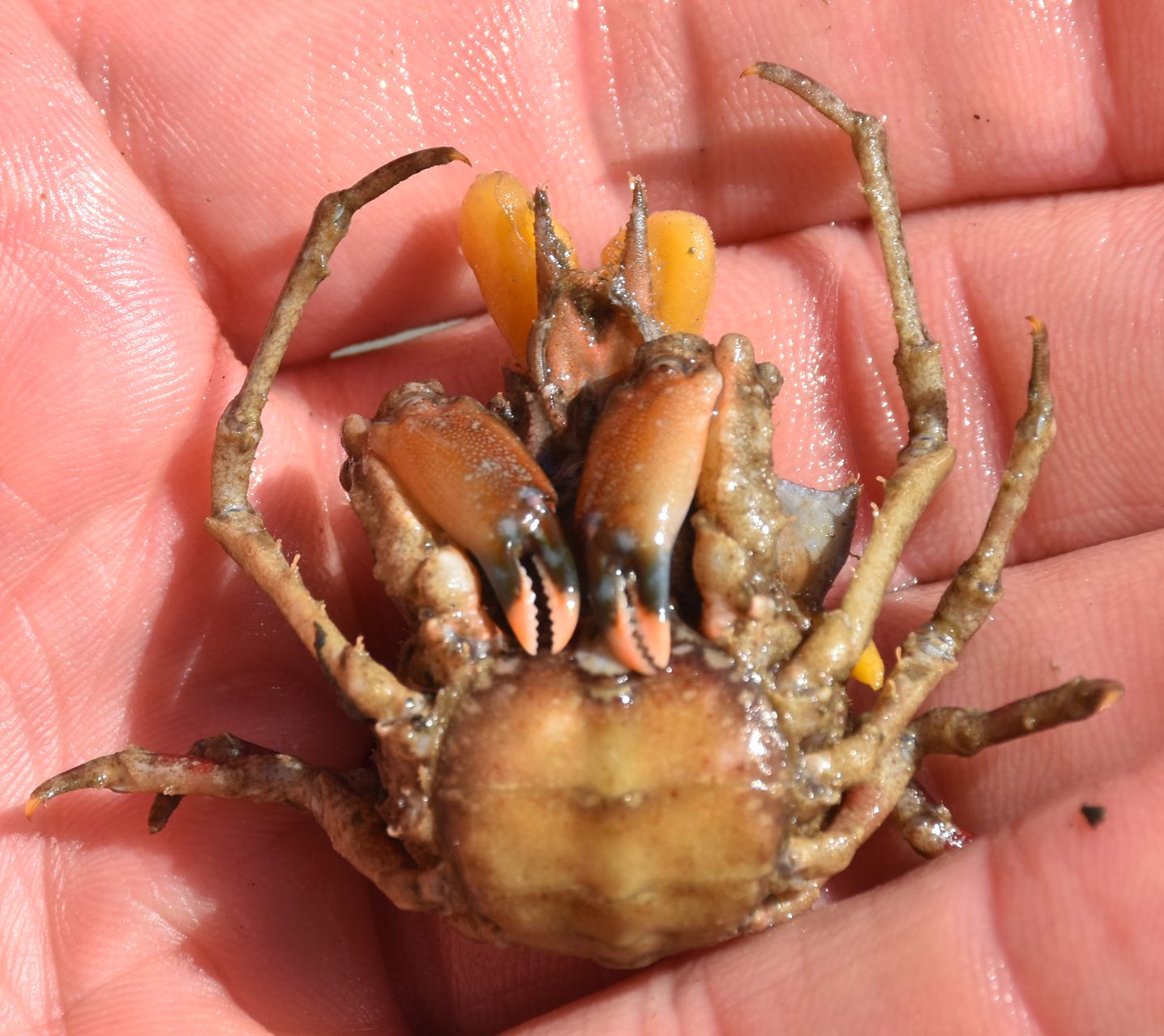 |
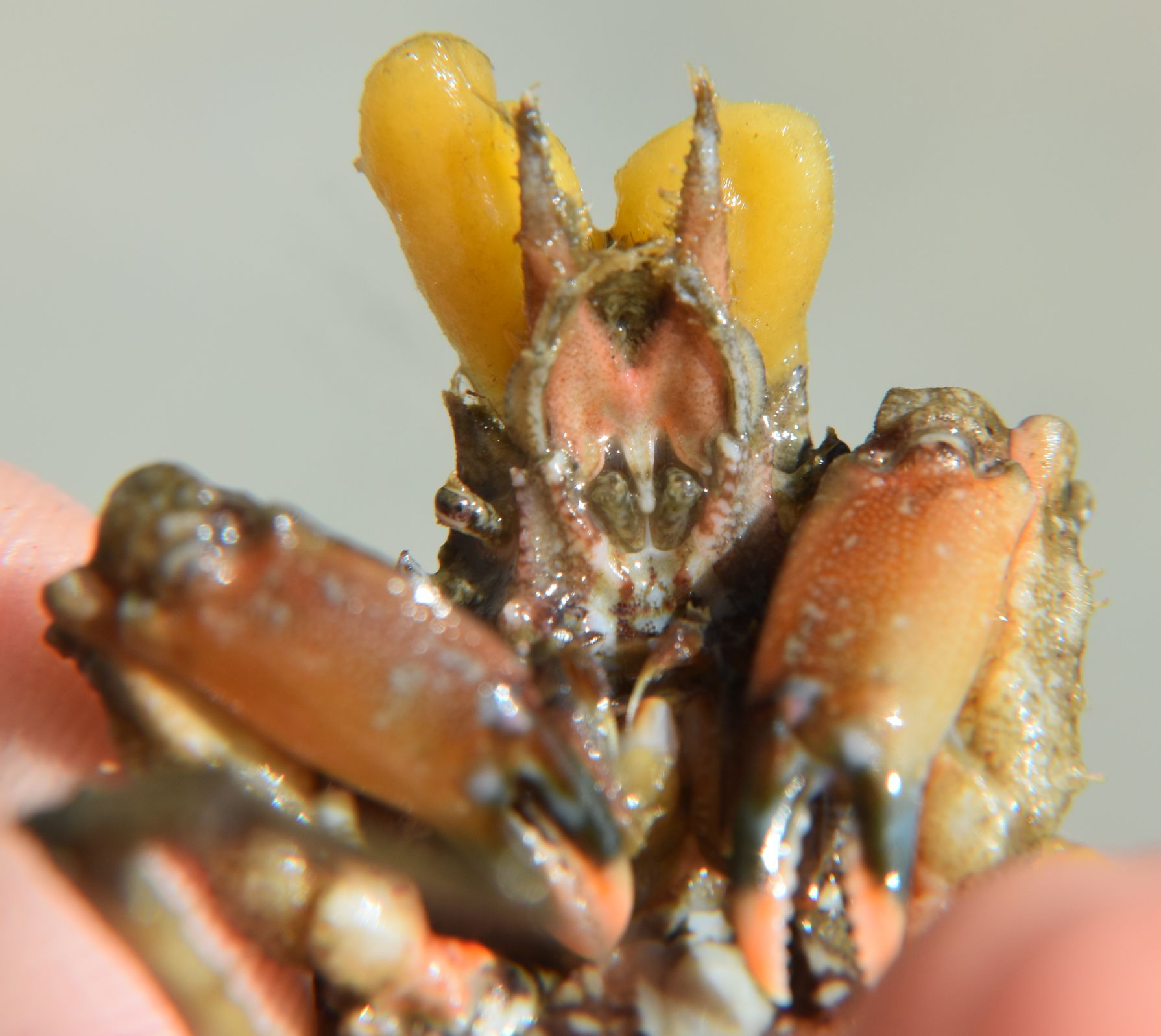 |
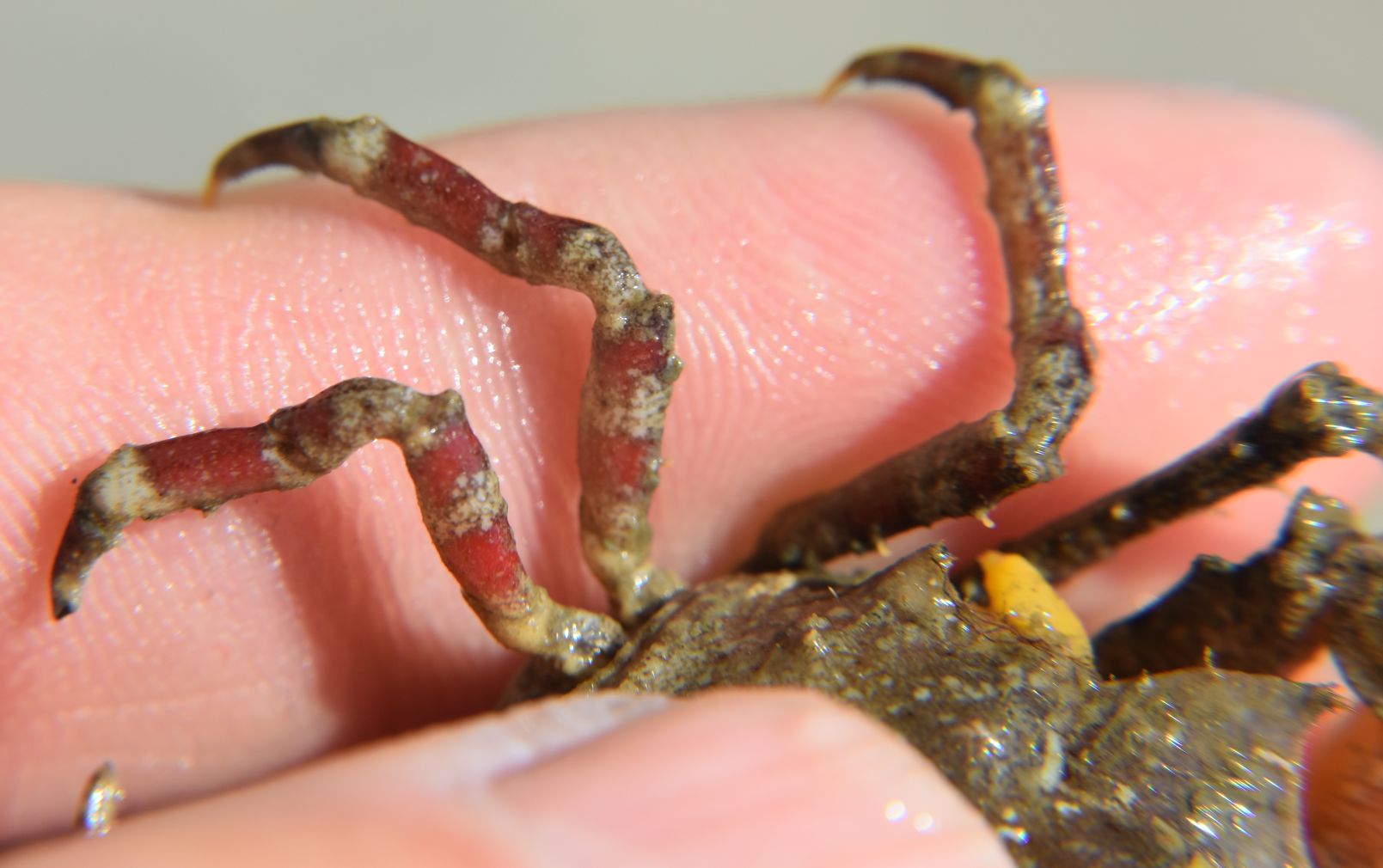 |
Authors and Editors of Page:
Dave Cowles (2005): Created original page